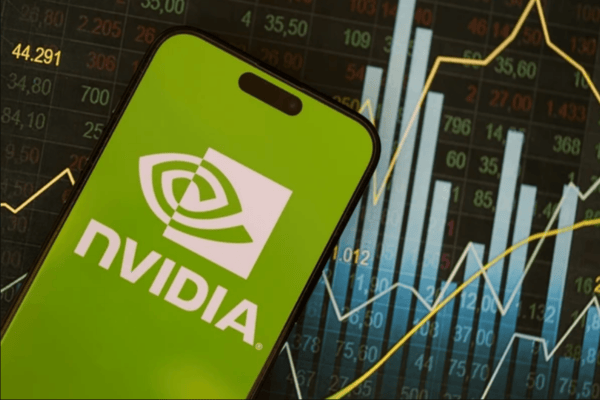
Ultima Markets App
Trade Anytime, Anywhere
Important Information
This website is managed by Ultima Markets’ international entities, and it’s important to emphasise that they are not subject to regulation by the FCA in the UK. Therefore, you must understand that you will not have the FCA’s protection when investing through this website – for example:
- You will not be guaranteed Negative Balance Protection
- You will not be protected by FCA’s leverage restrictions
- You will not have the right to settle disputes via the Financial Ombudsman Service (FOS)
- You will not be protected by Financial Services Compensation Scheme (FSCS)
- Any monies deposited will not be afforded the protection required under the FCA Client Assets Sourcebook. The level of protection for your funds will be determined by the regulations of the relevant local regulator.
Note: Ultima Markets is currently developing a dedicated website for UK clients and expects to onboard UK clients under FCA regulations in 2026.
If you would like to proceed and visit this website, you acknowledge and confirm the following:
- 1.The website is owned by Ultima Markets’ international entities and not by Ultima Markets UK Ltd, which is regulated by the FCA.
- 2.Ultima Markets Limited, or any of the Ultima Markets international entities, are neither based in the UK nor licensed by the FCA.
- 3.You are accessing the website at your own initiative and have not been solicited by Ultima Markets Limited in any way.
- 4.Investing through this website does not grant you the protections provided by the FCA.
- 5.Should you choose to invest through this website or with any of the international Ultima Markets entities, you will be subject to the rules and regulations of the relevant international regulatory authorities, not the FCA.
Ultima Markets wants to make it clear that we are duly licensed and authorised to offer the services and financial derivative products listed on our website. Individuals accessing this website and registering a trading account do so entirely of their own volition and without prior solicitation.
By confirming your decision to proceed with entering the website, you hereby affirm that this decision was solely initiated by you, and no solicitation has been made by any Ultima Markets entity.
I confirm my intention to proceed and enter this website Please direct me to the website operated by Ultima Markets , regulated by the FCA in the United KingdomWhy is Nvidia Stock Going Down? Key Factors Explained

Nvidia (NVDA) stock has recently faced significant fluctuations, driven by a mix of global trade tensions, economic uncertainty, and growing competition from other tech giants. Nvidia has long been a leader in the AI GPU market, playing a central role in fields like gaming, virtual reality, and the metaverse. However, the company is also grappling with a rapidly evolving landscape and challenges to its market dominance.
Nvidia’s rapid growth and $1 trillion market capitalisation have made it one of the most influential tech companies. Yet, as generative AI drives new demand, the competition is intensifying. The company faces an increasingly complex environment where its stock price is influenced by both market trends and its ability to innovate and stay ahead of rivals.
Factors Contributing to Nvidia’s Stock Decline
Several key factors have contributed to Nvidia’s stock price decline:
- US Semiconductor Restrictions on China: Nvidia’s reliance on global markets, especially China, has been impacted by the US export restrictions on semiconductors. These limitations, affecting Nvidia’s ability to sell high-performance chips, have caused significant revenue losses and created uncertainty around future growth, especially in Asian markets.
- Rising Competition: Nvidia has faced increasing competition from Intel, AMD, and other companies in the AI hardware space. These competitors are investing heavily in AI technology, pushing Nvidia to maintain its competitive edge. Intel’s recent advancements in AI chips are particularly noteworthy and have put pressure on Nvidia’s market share.
- Economic Uncertainty and Global Tensions: Broader economic factors, including inflation and trade tensions, have led to volatility in stock markets. Increased manufacturing costs due to tariffs and supply chain disruptions have hurt Nvidia’s profit margins, while overall investor sentiment has been cautious, impacting Nvidia’s stock price.
- Blocked Sales to China: The US’s decision to block Nvidia’s sales of certain chips to China has further dampened its stock performance. As China is a critical market, this restriction has raised concerns about Nvidia’s ability to maintain its global revenue growth, especially as competitors capitalize on Nvidia’s absence in that market.
The Role of AI in Nvidia’s Stock Performance

Nvidia’s success is closely tied to the AI revolution. As a leader in the AI GPU market, the company’s chips are essential for machine learning, deep learning, and AI-driven gaming. The growing demand for AI-powered solutions has boosted Nvidia’s revenue and played a significant role in its stock performance.
- AI GPU Demand: Nvidia’s GPUs are in high demand, enabling companies to build and optimize AI models. The surge in AI adoption continues to fuel Nvidia’s growth, but it faces mounting competition from Intel and AMD, both of whom are rapidly advancing in AI hardware.
- AI Industry Growth: As tech giants like Microsoft and Google ramp up AI infrastructure, Nvidia’s chips process the massive data required for AI models. However, the increasing competition means that Nvidia must innovate continuously to stay ahead.
Generative AI and Its Impact on Nvidia’s Stock Price
Generative AI, which involves using algorithms to create new content such as images, text, and music, has become a game-changer for industries like gaming, healthcare, and finance. Nvidia’s GPUs are at the forefront of this technology, enabling large-scale AI models that power generative applications.
- Nvidia’s Leadership in Generative AI: Nvidia is strategically positioned to capitalize on generative AI with its powerful GPUs. Its investments in AI and hardware are driving future growth. Still, the competitive landscape in this space is rapidly changing, and Nvidia’s ability to maintain leadership will be critical for future stock performance.
- Market Impact: As the generative AI sector expands, Nvidia’s stock price will be closely tied to its ability to maintain its position as a leader in this space. Analysts and investors will continue to monitor Nvidia’s ability to innovate and lead the AI revolution in the coming years.
Nvidia’s Financial Stability and Future Growth Potential

Despite recent challenges, Nvidia remains financially robust with strong cash reserves and a solid balance sheet. This financial strength allows the company to weather short-term difficulties while continuing to invest in new AI technologies and expand its product offerings.
- Revenue and Growth: Nvidia has faced revenue challenges due to trade tensions and global uncertainty. However, its continued dominance in the AI GPU market and its focus on generative AI make it well-positioned for long-term growth.
- Investor Confidence: Investor sentiment has been mixed, with some seeing Nvidia’s current stock decline as a buying opportunity. Nvidia’s strong position in AI and its financial reserves help sustain its long-term growth prospects, despite short-term market volatility.
Investor Sentiment and Stock Volatility
Investor sentiment towards Nvidia stock has been varied. While some investors are concerned about trade tensions, competition, and the uncertainty of AI adoption, others remain optimistic about Nvidia’s leadership in AI technology and its ongoing investments in generative AI.
- Stock Trends: Nvidia’s stock price has experienced notable volatility due to shifts in market sentiment and changing trends in the tech sector. Investors are closely watching Nvidia’s ability to navigate this volatile landscape and capitalize on AI opportunities.
- Buying Opportunities: As Nvidia’s stock price fluctuates, some investors are seeing this as an opportunity to buy at a discount. This reflects optimism around Nvidia’s future growth in AI, even as it faces competition and economic challenges.
Market Trends and Patterns
Nvidia’s stock performance has mirrored broader market trends, particularly those in the Nasdaq and Dow Jones. Positive sentiment in these indices often aligns with Nvidia’s stock performance, while economic uncertainty and trade tensions have led to price declines.
Technical Analysis: Traders closely monitor Nvidia’s stock for technical signals such as support levels and volume fluctuations, which can indicate the direction of future price movements.
Conclusion
In summary, Nvidia stock is experiencing fluctuations due to several factors, including economic uncertainty, trade tensions, increased competition, and challenges in the AI market. Despite these short-term challenges, Nvidia’s dominance in the AI industry, its investments in generative AI, and its strong financial position provide significant long-term growth opportunities. Investors need to closely monitor Nvidia’s ability to adapt to the rapidly changing tech landscape, but the company remains a key player in the AI revolution.
Disclaimer: This content is provided for informational purposes only and does not constitute, and should not be construed as, financial, investment, or other professional advice. No statement or opinion contained here in should be considered a recommendation by Ultima Markets or the author regarding any specific investment product, strategy, or transaction. Readers are advised not to rely solely on this material when making investment decisions and should seek independent advice where appropriate.












